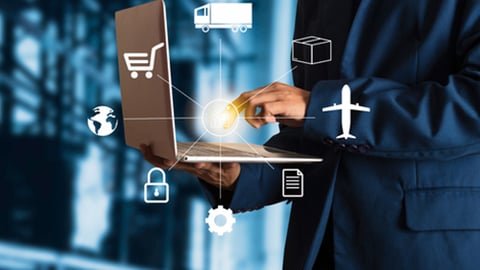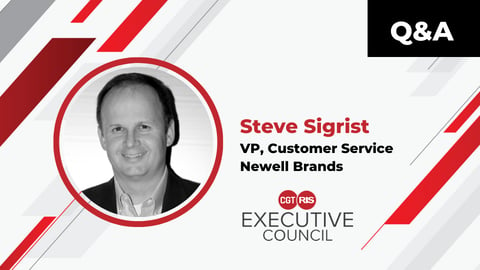How CPGs Can Evolve For an Omnichannel Commerce Experience
Over a year into the COVID pandemic, it’s clear that shopping behaviors have shifted dramatically. Digitally influenced sales continue to increase, and digital sales overall have been boosted due to the shift to online shopping.
According to eMarketer, 2020 saw an increase of 76% in digital sales on Walmart.com, a 44% increase at Amazon, and, perhaps most surprising to the consumer products industry, an increase of nearly 46% in direct-to-consumer (DTC) sales. Even as vaccine rollout continues and countries reopen, it’s unlikely that we will see a full return to pre-COVID shopping behaviors.
Before the pandemic, there was already significant pressure on CPGs to meet the ever-changing demands of their consumers. The rise of the Platform Economy has shifted expectations, making personalized experiences table stakes. Consumers’ standards for experience have been set high by Uber, Amazon, and other platform businesses, leading to demand for more convenience and personalization.
Consumers expect brands to understand their unique lives and needs and respond with customized solutions. If the experience they encounter on their journey is poor, or if they can’t find the brand they are looking for, they won’t hesitate to switch brands.
With increasing competition from data-rich digitally native brands, retailers, and even marketplace players such as Amazon’s newly launched food line, Aplenty, it is critical for CPGs to have access to customer data, allowing for creation of more personalized experiences, as well as better products and ultimately a smarter business overall.
Many CPGs turn to DTC as a way to gain more control over customer data and the customer experience. Over the last year, we saw CPGs such as PepsiCo, Unilever, Nestlé, and Mondelez enter the space with unique value propositions such as bundles and gifting. Besides just a unique product offering, another way to be successful in encouraging data exchange that drives value for both consumers and the business is to reimagine existing customer experiences. CPGs should consider the following:
- Consider the entire journey and recognize the many options consumers have along that journey — be there to help them progress through the journey, removing friction and enhancing the experience with selection tools, rich content and always-on self-service support.
- Enable various ways to purchase that are unique to each channel, such as subscription, special offers, bundles, gifting, etc.
- Reward for loyalty by delivering personalized value that goes beyond discounts and freebies.
- Ensure shopping is made convenient by working with partners and retailers to provide multiple options for purchase and last mile delivery or pickup.
- Align with consumer values by providing transparency in supply chain, packaging material, and ingredients. Allow for matching donations and other charitable options.
- Use real-time data signals to manage demand volatility and ensure product availability across all channels to avoid switching.
- Harness the power of data and AI to continually learn, personalize and further optimize the customer experience.
When done right, improved experiences drive a data exchange that can deliver real value for the business across three areas: knowing consumers and deepening the engagement; building and selling better products and services; and understanding and running a smarter business. In fact, a Publicis Sapient analysis shows the following potential:
To be successful in realizing this value, CPG companies need to become data-driven organizations, aligning on a unified data strategy that puts the consumer experience at the center and operating outside of organizational silos. They need to not just take ownership of capturing their consumer data through experiences, but also put in place the technology capabilities and operating model to govern and operationalize the use of data across the enterprise.
In the past several years, CPGs have made big investments in data and analytics, but have struggled to reap the rewards. Data generation and collection is increasing exponentially, and the average company now have over 80 software systems in place to manage this data, but according to a Gartner study on MarTech, 42% of companies believe they are not using their tech stack to its potential and admit that a mere 0.5% of the data collected is actually analyzed and leveraged.
For CPGs to thrive in the future, it’s time for them to take ownership of the experience they are delivering to their consumers. The proper data strategy, technical capabilities and operating model are critical to that success.
Kristen Groh is consumer products industry lead at Publicis Sapient and a member of the CGT/RIS Executive Council.






